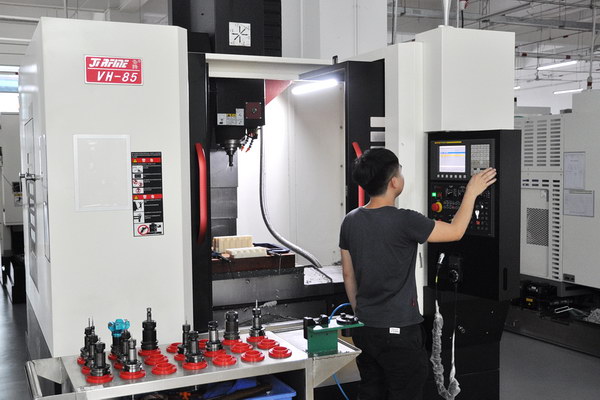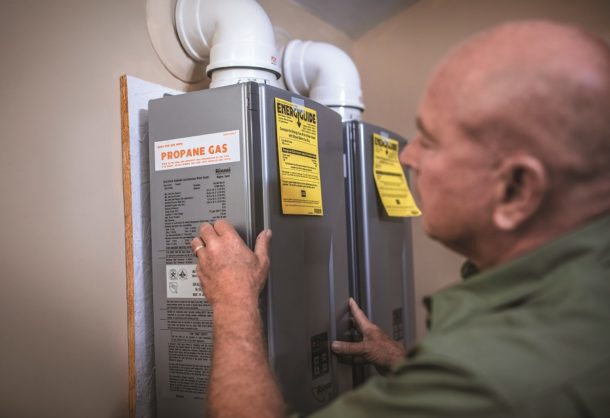If you run a business, the chances are that you already know just how important an effective website can be. The business website is the modern-day equivalent of a storefront. It’s a point of contact and an opportunity to show off your work to potential customers. A bad business website, while potentially better than no Read more
Guest Blog

If you run a business, the chances are that you already know just how important an effective website can be. The business website is the modern-day equivalent of a storefront. It’s a point of contact and an opportunity to show off your work to potential customers.
A bad business website, while potentially better than no website at all, is a problem. It can look unprofessional and put people off your company.
First things first, why have a blog at all?
There are a lot of reasons. Yes, it’s a lot of work, but a blog is an expected part of any business website.
Typically, the blog should include helpful and interesting posts that are related to your business in some way. For example, if you are a plumber, the blog could talk about common plumbing issues and what people can do about them.
This is kind of like a shopkeeper talking to customers. It adds a personal touch, but it also establishes you as an authority in the field.
It also gives you a much better opportunity to advertise your products and services in a less in-your-face way.
And, because it’s expected, not having a blog can make your business seem less professional. Blogs encourage customers to stick around, and the longer they spend on your website, the more likely they are to want to do business with you.
At least, they’re more likely to want to do business with you if you have a good blog.

Regular Content
The first way to upgrade your blog is to pay attention to how often you update it. An abandoned blog is barely any better than a non-existent blog, as people will notice if new posts haven’t been added for months or even years.
You don’t need to post every day or even every week. The key to regular content is to post at set times. Weekly or every couple of weeks will do, as long as it’s regular.
This proves that you’re paying attention, while a neglected blog will look just that, neglected. Your blog reflects your company and your work.
Good Content
On the same note, a shoddy blog can have a similarly negative effect on how people perceive your business.
So, the content needs to be relevant, interesting, and competent. Your business blog is not the place to ramble on about your favorite fishing spots or what cars you love.
The spelling and grammar should be excellent. Yes, you aren’t an expert, but people do spot mistakes. Also, try to include images to break up the text and make the blog more visually engaging.
SEO Marketing
One great use for your blog is that it can market your business and draw people to your website. In order to get the most about this, use an SEO agency to level up your content marketing game using SEO strategies.
This way, your blog will work for you.

Michele Windsor, Vice President of Training and Implementation, Successware As 2023 draws to a close, many business owners are taking stock of their business from top to bottom, making plans for the coming year. There are multiple areas to consider, including personnel and equipment needs, budget forecasts, growth plans and more. One common theme that Read more
Michele Windsor, Vice President of Training and Implementation, Successware
As 2023 draws to a close, many business owners are taking stock of their business from top to bottom, making plans for the coming year. There are multiple areas to consider, including personnel and equipment needs, budget forecasts, growth plans and more.
One common theme that often surfaces during this time of reflection and planning ahead is how to best fix and streamline business processes. For home service contractors, it’s imperative to have a range of features and tools to manage your team in the field or in the home office, and it’s even better when it’s all combined in a comprehensive platform. When you have the right system working for you, it can significantly enhance your business’s efficiency, productivity and profitability.

A few software tools that will help your team’s daily functioning:
- Centralized Data Management – Technicians and employees across all departments need real-time access to the business data in order to make informed decisions and perform their tasks efficiently. Make it a priority to have a centralized hub for storing and managing all data. When everything is consolidated in one place, access to critical information is streamlined, reducing the risk of it being stolen.
- Workflow Automation – Automating routine and repetitive tasks will reduce human error and save valuable time. If you want to ensure that tasks are completed on time, invoices are sent out promptly and inventory is restocked when needed, look at setting up automated alerts, reminders and triggers.
- Customer Relationship Management (CRM) – Everyone wants to improve customer satisfaction and retention and also increase upselling opportunities. When a business is tracking customer data, communication history and preferences, those interactions can be personalized and more tailored services can be offered.
- Seamless Finances – Efficient invoicing, payment tracking and expense management are crucial for any business. A great tool for managing these financial processes will streamline every step, ensuring accurate and timely transactions. The right tool can also provide valuable insights through financial reporting and analytics, helping business owners make data-driven financial decisions.
A few important features to up your business operations game:
- Analytics and Reporting – More and more businesses are realizing the value of analytics and reporting tools that allow them to gather insights into their performance, identify areas for improvement and make strategic decisions based on data. This kind of data-driven decision-making is a core component of modern business success. Look for tools that give a clear overview of business operations by providing key performance indicators (KPIs), customizable reports and visual dashboards.
- Mobile Access – Remote access is crucial in today’s fast-paced business environment. Technicians are able to stay connected and productive even when they are on the road when they have mobile app and remote access capabilities. Because this feature enables real-time updates and communication, it is particularly valuable for businesses with field service teams.
- Scalability – As an organization expands, it’s important that the business management platform adapt and scale to accommodate additional users and increased workloads. This scalability ensures that a business can continue to benefit from the platform as it evolves.
As you seek to improve efficiency, reduce operational costs and drive overall success, it’s imperative to centralize data, automate workflows and integrate business functions. This year, resolve to fix and streamline your business processes by harnessing the power of these tools all in one comprehensive platform. Doing so will help your company stay competitive in today’s dynamic and demanding marketplace.
 Michele Windsor is an experienced leader with over 23 years’ experience within the software vendor space. She has expertise in management and optimization and has conceptualized and executed enterprise solutions for high-profile corporations. Michele is focused on increasing business efficiencies, growing revenue and improving operational processes. As Vice President of Training and Implementation at Successware, she is committed to a seamless customer journey and creating customers for life by helping them understand how to use Successware products to increase their business productivity.
Michele Windsor is an experienced leader with over 23 years’ experience within the software vendor space. She has expertise in management and optimization and has conceptualized and executed enterprise solutions for high-profile corporations. Michele is focused on increasing business efficiencies, growing revenue and improving operational processes. As Vice President of Training and Implementation at Successware, she is committed to a seamless customer journey and creating customers for life by helping them understand how to use Successware products to increase their business productivity.

A staggering 85% of manufacturers believe that adopting industrial machinery is paramount to staying competitive. As the world swiftly moves towards the fourth industrial revolution, or Industry 4.0, the manufacturing sector finds itself amidst a transformative phase. The change isn’t just about replacing old machinery with newer models. It’s about a holistic integration of technology Read more
A staggering 85% of manufacturers believe that adopting industrial machinery is paramount to staying competitive. As the world swiftly moves towards the fourth industrial revolution, or Industry 4.0, the manufacturing sector finds itself amidst a transformative phase.
The change isn’t just about replacing old machinery with newer models. It’s about a holistic integration of technology, automation, and digital solutions into the heart of manufacturing. The role of advanced industrial equipment, from robotics to IoT, has proven to be a game-changer.
Especially for those in mechanical contracting, understanding this shift isn’t a choice anymore—it’s a necessity. Let’s dive deeper into how modern industrial machinery is revolutionizing how we think about manufacturing and contracting.

The Significance of Advanced Industrial Machinery
The adoption of advanced industrial machinery has indelibly transformed the landscape of the manufacturing industry. As the world gravitates towards the promises of Industry 4.0, manufacturers find themselves at the forefront of this change, ushering in new opportunities and addressing challenges head-on.
Advanced machinery, incorporating insights from AI and IoT, isn’t just a luxury; it’s the cornerstone of modern manufacturing.
Enhancing Efficiency in Modern Mechanical Contracting
Today’s mechanical contracting is no longer just about connecting pieces of equipment or overseeing manual labor. It’s about harnessing the power of modern industrial machinery to redefine what’s possible. At the heart of this transformation is efficiency. With every industry facing intense competition, streamlining operations and maximizing output have never been more crucial.
Enter advanced industrial equipment. These aren’t merely replacements for obsolete tools; they’re sophisticated solutions that help streamline workflows, ensuring tasks are completed efficiently and with unparalleled accuracy.
Consider the role of sensors in the machinery. They offer real-time monitoring, enabling predictive maintenance that dramatically minimizes unplanned downtime. Once a fanciful notion, robotics now plays a vital role in reducing operational costs, thereby increasing efficiency.
Moreover, as the supply chain faces disruptions from a pandemic or a shortage of raw materials, having advanced machinery equipped with real-time connectivity becomes pivotal. It allows manufacturers to adapt to changing scenarios swiftly, ensuring customer expectations are always met.
Advanced industrial machinery isn’t just a thread; it’s the fabric holding everything together, empowering contractors to offer more, faster, and with an efficiency previously thought unattainable.
Types of Advanced Industrial Machinery
As the manufacturing industry delves deeper into the digital age, an array of advanced industrial machinery is essential for improving efficiency and productivity. This modern equipment, integrated with technology and automation, promises a bright future for manufacturers.
Let’s delve into some of the prominent types that are revolutionizing the sector.
Hydraulic Systems
Hydraulic systems have long been a cornerstone in the industrial machinery manufacturing sector. Harnessing the power of fluid mechanics, they optimize operations by offering unparalleled accuracy and force. From cranes to loaders, these systems play a vital role in ensuring machinery operates smoothly, responding efficiently to the demands of heavy-duty tasks.
CNC Machines
Computer Numerical Control (CNC) machines are nothing short of a game-changer. These marvels, backed by digital solutions, have transformed the manufacturing process. By automating and streamlining manual labor, CNC machines offer unparalleled precision, allowing manufacturers to produce customized products with unparalleled accuracy.
Conveyor Systems
A well-organized supply chain is at the heart of every efficient manufacturing setup, and conveyor systems are pivotal in ensuring this. Beyond just moving raw materials, these systems are now equipped with sensors and IoT connectivity, ensuring real-time monitoring and thus minimizing disruptions in the workflow.
Industrial Robots
Robotics, once a vision of the distant future, are now a reality in every industry. Industrial robots, equipped with AI and machine learning capabilities, reduce labor costs and ensure tasks, from welding to assembly, are executed with improved productivity. Their adoption in the manufacturing industry signifies a transformative shift towards automation, ensuring operations are streamlined and output maximized.
Hydraulic systems, a foundational aspect of modern industrial machinery, have carved a niche in almost every sector, from energy production to manufacturing.
Overview
At its core, a hydraulic system harnesses the power of fluid dynamics to generate force or motion. Predominantly found in heavy machinery, these systems are essential in tractors, drills, mixers, and even some prototypes of 3D printers. Their adoption by industrial machinery manufacturers is testimony to their efficiency and reliability.
As we move towards greener solutions, research and development in this domain are geared towards integrating hydraulic systems with renewable energy sources, making them an enticing choice for new markets.
The rise of hydraulic systems can be attributed to the evolving needs of the middle class, whose demand for faster, more efficient, and affordable production processes is ever-growing. OEMs (Original Equipment Manufacturers) understand the significance of this, ensuring that modern industrial equipment, especially in the manufacturing realm, includes hydraulic components.
Maintenance Tips
Maintaining hydraulic systems is paramount for their profitability and longevity. The first steps include regular checks for leaks, ensuring fluid levels are optimal, and replacing worn-out parts. Contacting professionals for hydraulic repairs is wise for those unfamiliar with these systems.
Additionally, sharing data with manufacturers can help them enhance newer models, offering improved customization options. Always refer to the privacy policy before sharing sensitive data, and for hands-on experience, consider workshops that cater to the wholesale builder community, focusing on hands-on simulation exercises.
CNC Machines
In the panorama of advanced industrial machinery, CNC (Computer Numerical Control) machines stand out as a testament to how technology can redefine precision and efficiency in the manufacturing sector.
Overview
At their essence, CNC machines are industrial machines governed by computerized controls, leading to the automation of traditionally manual tasks. This adoption of industrial machinery, particularly CNCs, has revolutionized how manufacturers make intricate components. From automotive parts to intricate jewelry designs, CNCs offer unparalleled accuracy.
Their digital nature ensures that the same design can be replicated flawlessly, continuously enhancing productivity and customer satisfaction. Furthermore, their flexibility means they can be reprogrammed easily to cater to different tasks, making them an invaluable asset in diverse industries.
Maintenance Tips
While CNC machines offer exceptional precision and reliability, they require a dedicated maintenance routine to ensure longevity. Here are some general tips:
- Regularly clean the machine, ensuring no debris interferes with its operation.
- Lubricate moving parts as specified by the manufacturer to reduce wear and tear.
- Back up your CNC programs, ensuring you can quickly restore operations if there’s a system error.
- Frequently check for software updates. Manufacturers often release patches that enhance the machine’s performance or rectify known issues.
- Always have a line of communication open with your supplier. If you face any challenges, feel free to contact us for more information or the respective support channels to address your concerns promptly.
While CNC machines herald a new era of manufacturing prowess, their efficiency remains intertwined with diligent maintenance and care.
Conveyor Systems
At the heart of many industrial operations, conveyor systems play a pivotal role, streamlining the movement of materials and ensuring seamless production flows.
Overview
As the name suggests, Conveyor systems are designed to convey materials from one point to another within a facility. Whether in a sprawling manufacturing plant, a distribution center, or a packaging facility, these systems ensure timely and efficient material handling. They come in various forms, such as belt, roller, and chain conveyors, each tailored for specific operational needs.
Beyond just transportation, modern conveyor systems often integrate sensors and advanced technologies, offering real-time monitoring and even sorting capabilities. Their ubiquity in industries underscores their importance in achieving optimal workflow and production targets.
Maintenance Tips
A consistent maintenance routine is crucial to maintain the efficiency and longevity of conveyor systems. Here are some general maintenance tips:
- Regular Inspections: Inspect belts or chains for signs of wear, tear, or misalignment. This proactive approach can prevent potential breakdowns.
- Cleanliness: Ensure the conveyor’s surface and surroundings are free from debris or materials that might hinder its operation.
- Lubrication: Parts like bearings, chains, and other moving components need regular lubrication to function smoothly and prevent premature wear.
- Update Software: If your conveyor system has integrated technology, constantly update its software for optimal performance.
- Safety First: Always prioritize safety. Ensure all safety guards are in place and the system’s emergency stop functions are working correctly.
While conveyor systems offer tremendous operational advantages, their peak performance is tied to regular and diligent maintenance efforts.
Industrial Robots
Industrial robots represent the pinnacle of digital transformation in manufacturing and production, epitomizing the blend of technology and mechanical prowess.
Overview
Industrial robots are automated, programmable machines capable of carrying out complex tasks with high precision and speed. These robots have been a transformative force born out of the need to enhance efficiency and reduce supply chain disruptions. Their integration into the manufacturing scene signifies an upgrade in machinery and a paradigm shift towards embracing a sustainable and technologically advanced future.
With the incorporation of IIoT (Industrial Internet of Things), these robots offer an operator enhanced visibility throughout the production process, ensuring discrepancies are addressed promptly. Moreover, as the workforce adapts to this digital transformation, robots and systems like ERP (Enterprise Resource Planning) promise streamlined operations, reducing errors and wastage.
Maintenance Tips
To ensure the extended lifespan and optimal functioning of industrial robots.
- Routine Inspections: Have an operator regularly check for signs of wear or mechanical stress. Addressing issues early can prevent more significant malfunctions later.
- Software Updates: Robots benefit from periodic software updates like any tech-driven machinery. These not only fix bugs but can enhance performance.
- Lubrication and Cleaning: Ensuring moving parts are well-lubricated and debris-free can prolong their lifespan.
- Training the Workforce: Continuously train the workforce to understand the nuances of the robot’s operations, ensuring smooth collaboration.
- Safety Protocols: Always prioritize safety. Enhance visibility around the robot’s operational area and ensure safety mechanisms are active to prevent mishaps.
- Plan for Upgrades: With technology evolving rapidly, be ready to upgrade components to ensure sustainability and prevent obsolescence.
While industrial robots are a marvel of modern engineering and technology, their optimal performance relies on regular maintenance and a well-trained operator, ensuring they remain valuable in the production chain.
Proactive Maintenance Strategies
In the vast world of industrial operations, downtime is a costly enemy. Every minute a machine stands idle, expenses accrue, production targets falter, and the bottom line suffers. As the adage goes, prevention is better than cure, and nowhere is this more evident than equipment maintenance.
Preventing Costly Downtime
Understanding the importance of proactive maintenance isn’t just about recognizing the costs associated with breakdowns; it’s about appreciating the broader implications for the entire operation. Unscheduled halts can disrupt supply chains, tarnish a company’s reputation, and compromise safety standards. Therefore, being proactive rather than reactive is crucial.
By adopting a preventive approach, operators can anticipate potential issues before they escalate into significant problems. Regular inspections, timely upgrades, and a keen understanding of equipment life cycles are all essential aspects of this strategy.
Furthermore, technology integration has cast light on the importance of proactive maintenance, with tools offering insights that were once impossible to glean.
The Role of IoT and Predictive Maintenance
The Internet of Things (IoT) has been a maintenance game-changer. With sensors and devices connected in real-time, the data generated provides a granular view of machinery health. This technological adoption has paved the way for predictive maintenance.
Predictive maintenance, as the name suggests, allows companies to predict when a piece of equipment is likely to fail or requires servicing. Instead of relying on generic schedules or waiting for a machine to show obvious signs of wear, data analytics can now foretell potential issues. This minimizes downtime and optimizes machinery’s lifespan, ensuring operations remain smooth and efficient.
Conclusion
In today’s rapidly evolving industrial landscape, integrating advanced machinery, from CNC machines to hydraulic systems, underscores a paradigm shift towards efficiency and precision. While these innovations offer unparalleled advantages, their optimal performance is intrinsically tied to regular maintenance and proactive strategies. Embracing the power of IoT and predictive maintenance, industries can preemptively address potential issues, minimizing costly downtimes and maximizing machinery lifespan.
Furthermore, continuous training and collaboration between man and machine will become paramount as the workforce adapts to this digital transformation.
The future of industrial operations isn’t just about adopting advanced machinery but nurturing them through informed maintenance strategies, ensuring sustained productivity and growth.

We’re going to talk about a painful topic,” Callbacks”. I bet I just made the hair stand up on the back of your neck. After being a contractor for 23-plus years and speaking to contractors daily, one of the most proverbial pain points in owning a contracting business is callbacks. Callbacks can be highly frustrating Read more
We’re going to talk about a painful topic,” Callbacks”. I bet I just made the hair stand up on the back of your neck. After being a contractor for 23-plus years and speaking to contractors daily, one of the most proverbial pain points in owning a contracting business is callbacks. Callbacks can be highly frustrating, a waste of valuable time, increase technician turnover, very expensive for the company, and in some cases, the loss of a customer. Throughout this article, will talk about dissecting the cause, and I will give you four steps you can implement to reduce them.
If we break callbacks into four categories; human error, manufacturer defects, lack of training, and inadequate operations it will be much easier to identify a rationale to track them. We are all human and prone to make some mistakes and even the best manufacturers have some defective products that find their way to the wholesaler’s shelf. Training is one of the best areas to maximize your efforts as it improves technician confidence which customers will immediately notice when speaking to them. A company-wide training culture also creates validation that a tech fully understands the product “before” being asked to service or install products. Operations afford owners and managers to be transparent with their techs when an event occurs and how to prevent them from moving forward. Using technology can help mitigate callbacks by bringing consistent operations to the top of mind, customer communication, and customer specifics, when techs are in the field.

Human Error
Unless the mistake is repetitive, or constantly not following company operations, human error is a hard one to have a resolution for. Good coaching, knowing and interacting with your techs, and being transparent with technicians are some of the best procedures to help with human error. Look at the data and see if there is a pattern. Perhaps something is happening with that senior tech outside of work that is causing the errors at work. Tracking the errors by the technician and job type is a best practice to reduce them.
Manufacture Defects
Contractors attempting to get paid for a manufacturer defect is challenging. We all know most times if a product fails under the warranty period, it will replace the part but not pay for any of the labor. Even on a DOA (dead on arrival) issue, this policy stays true however, there are exceptions. The key takeaway for handling defective products is to track them. Tracking them gives you the availability to see trends and make adjustments to the product or manufacture. It’s also worth noting to differentiate between the product and the tech doing the work. Specifically, make sure it is the product and not an install or service procedure the tech is not doing correctly. Once you track how many manufacturing defects you see in the course of the year, then calculate and it should become a line item in your pricing structure as a cost of doing business. Yes, this is a normal expense item that is a cost to run a business. Large corporations operate this way as they know there will be mistakes and contracting is no different.
Operations
Constantly monitoring and adjusting your operations can play a role in reducing callbacks. There are numerous CRM’s that help automate tracking the data to make adjustments. Data like trends in a job type, what products were used, which tech did the work, and the amount of time the tech was on the call. Automation also helps to mitigate confusion between the customer, dispatcher, and the original call. Defining and adjusting operations that affect callback mitigation is key to reducing them company-wide. Be completely transparent with company procedures between the technicians and their manager as to what happens when there is a callback.
Training
Teachable and trainable moments on an individual and company-wide basis can be produced through callbacks. Decide if there is one tech or several techs on a given call type having callbacks. If it’s several techs on the same callback, bring them together and reinforce the training on the hows and whys and just as importantly track the outputs of the training efforts. Make the adjustments from the group to individualized training accordingly if the callbacks persist with one technician. If the callback is from an individual and it’s identified as a training issue, assign or implement the training and as an interim, use your CRM to prevent that tech from doing the call type until it is confirmed the tech thoroughly understands the original mistakes made. Providing, implementing, and tracking training for your tech is one guaranteed way to mitigate technical and operational mistakes that lead to callbacks. In the fast-paced business environment, numerous contractors don’t value training or implementation of activity at the level it should be. There are other, less expensive options available to contractors to use a training tool instead of traditional brick-and-mortar training models. Digital and virtual reality software is available at one-third the price per technician. This training can be done asynchronously and not affect workflows and scheduling. All of the metrics are available to track the progress of a technician’s performance against the training activity assigned to a technician and help with callback mitigation.
There you have it! Implement and or refine these four tactics in your business and you will start to reduce some of your callbacks. It should be noted that one of the impacts of a callback not mentioned in this writing is the financial impact and opportunity costs of a callback on the company’s bottom line. Look for a breakdown and explanation of that in future articles. Happy Contracting!
 Guest Blogger: Ken Midgett, has been in the plumbing and heating industry for over four decades. He has worked in every facet of the plumbing and heating industry. He has owned two successful PHCC businesses, is a licensed Master Plumber, a two-time national award-winning educator for plumbing and heating CTE classrooms, with a 100 percent placement into the industry for all eligible seniors from his program. Ken was noted throughout the CTE industry for the inclusion of non-traditional workers in his classroom, including young women. He has placed several of those young women in the workforce. Ken is passionate about the skilled trades and he continues to stay active in PHCCNA and PHCCPA. Ken is the current president of his local PHCCLV association. This role has allowed him to continue mentoring and coaching young apprentices in the field. He is currently employed at Interplay Learning as the Plumbing Market Director. You can follow Ken at www.linkedin.com/in/kenmidgett.
Guest Blogger: Ken Midgett, has been in the plumbing and heating industry for over four decades. He has worked in every facet of the plumbing and heating industry. He has owned two successful PHCC businesses, is a licensed Master Plumber, a two-time national award-winning educator for plumbing and heating CTE classrooms, with a 100 percent placement into the industry for all eligible seniors from his program. Ken was noted throughout the CTE industry for the inclusion of non-traditional workers in his classroom, including young women. He has placed several of those young women in the workforce. Ken is passionate about the skilled trades and he continues to stay active in PHCCNA and PHCCPA. Ken is the current president of his local PHCCLV association. This role has allowed him to continue mentoring and coaching young apprentices in the field. He is currently employed at Interplay Learning as the Plumbing Market Director. You can follow Ken at www.linkedin.com/in/kenmidgett.

Propane systems can help meet the growing demand for sustainable, energy-efficient homes Homeowner and homebuyer priorities are shifting. The majority of residential customers are seeking high-performance homes—specifically ones with reduced energy costs and lower environmental impacts, according to the Propane Education & Research Council (PERC). A study commissioned by PERC found that of the 2,200 Read more
Propane systems can help meet the growing demand for sustainable, energy-efficient homes
Homeowner and homebuyer priorities are shifting. The majority of residential customers are seeking high-performance homes—specifically ones with reduced energy costs and lower environmental impacts, according to the Propane Education & Research Council (PERC).
A study commissioned by PERC found that of the 2,200 U.S. residents surveyed, large percentages of people are willing to pay more for an energy efficient home – that’s81 percent of customers remodeling a home, 88 percent of customers buying a home, and 96 percent of customers building a home.
Customers often turn to construction professionals to help them select the right energy systems for their home. This creates a great opportunity for builders and contractors who are well-versed in energy-efficient systems to capitalize on this growing customer base.
Propane can provide a whole-home solution for these customers because propane appliances offer considerable advantages over other systems when it comes to efficiency, performance, sustainability, and dependability.

High-efficiency propane systems offer reduced annual energy costs
Propane is a versatile energy source, powering everything from space and water heating to clothes dryers and cooking equipment. Many of a home’s major systems perform better with propane as the energy source, so homeowners will enjoy greater comfort and lower energy bills compared with all-electric homes.
High-efficiency propane boilers provide energy, cost, space, and carbon savings in both new and existing homes. They offer the versatility to provide heating, hot water, and even snow melt. This versatility also extends to the heating delivery systems propane boilers serve, including hydronic baseboard systems, in-floor radiant systems, or even forced-air systems where the hot water from the boiler (instead of a furnace) is the heat source. Propane boilers are available in a wide range of heating capacities with inputs reaching as high as 299,000 BTU per hour. The ability of propane boilers to supply domestic hot water makes them ideal candidates for residential installations.
High-efficiency propane furnaces deliver significant value and a new level of comfort. They’re affordable, efficient, and environmentally friendly. A high-efficiency propane furnace is rated anywhere between 90 and 98 percent efficient, according to PERC. Over time, propane furnaces also maintain their efficiency better than systems like electric air source heat pumps.
Combining a propane furnace with other clean energy options, like a ground source heat pump (GSHP), provides your customers with added reliability and decreased costs. Hybrid GSHP and propane furnace systems can optimize first costs and long-term energy performance, according to data from PERC. By using a high-efficiency propane furnace to handle heavier heating loads, the ground loop can be significantly reduced, saving thousands in first costs. In one analysis, the hybrid system reduced first costs by around $4,500 and accelerated the overall system payback compared to a GSHP installation with an electric resistance backup.
Propane-powered tankless water heaters provide efficiency by supplying high volumes of hot water with a small footprint. Their compact size saves roughly 12 square feet of floor space compared with many electric systems—a benefit in tight floor plans, including multi-family projects. Their size and direct-vent design make it possible to install these units in tight spaces like closets or outdoors. Because of their long service life and low annual energy costs, propane-powered tankless water heaters have the lowest annual cost of ownership in almost all climates, whether they are installed in new buildings or purchased as replacements.

Propane reduces a home’s carbon footprint
Propane is a low-carbon energy source that produces significantly fewer greenhouse gas emissions (GHG) than most other energy sources. One of the best ways for construction professionals to help environmentally conscious customers reduce their emissions is by incorporating propane-powered appliances into the home.
High-efficiency propane tankless water heaters can produce up to 61 percent fewer GHG emissions, 47 percent fewer nitrogen oxide (NOx) emissions, and 91 percent fewer sulfur oxide (SOx) emissions than electric storage tank water heaters, according to data from PERC. They operate cleaner than electric tankless models, too. In fact, propane tankless systems emit up to 57 percent fewer GHG emissions compared with electric tankless systems in both residential and commercial applications.
And with a propane furnace, homeowners have a cleaner source of home heat than electric furnaces, Energy Star-rated and standard electric heat pumps, and heating oil systems. According to a study from the Gas Technology Institute (GTI), propane furnaces can produce up to 50 percent fewer greenhouse gas emissions than an electric furnace and 22 percent fewer than an electric heat pump.
Further, propane cooking ranges generate up to 15 percent fewer full-fuel-cycle GHG emissions and 83 percent fewer SOx emissions compared to electric ranges. And propane clothes dryers, when compared with electric models, produce up to 42 percent fewer full-fuel-cycle GHG emissions, 23 percent fewer NOx emissions, and 83 percent fewer SOx emissions.
The customer demand for clean, efficient home builds continues to rise. When customers turn to you for guidance, make sure you’re well-versed on high-performance solutions, including propane systems. Visit Propane.com/Residential-Construction to learn more about the benefits of propane.
 Bryan Cordill is the director of residential business development at the Propane Education & Research Council. He can be reached at bryan.cordill@propane.com.
Bryan Cordill is the director of residential business development at the Propane Education & Research Council. He can be reached at bryan.cordill@propane.com.
